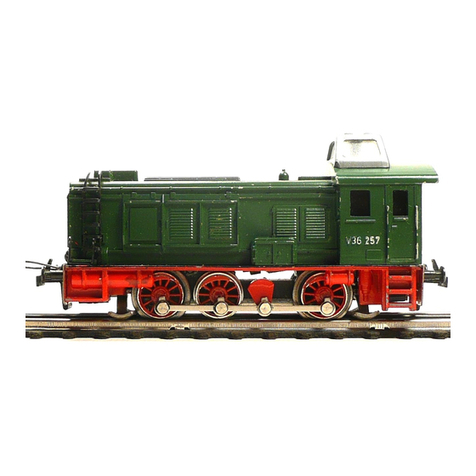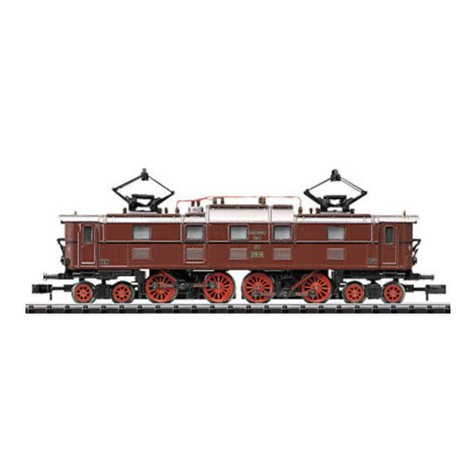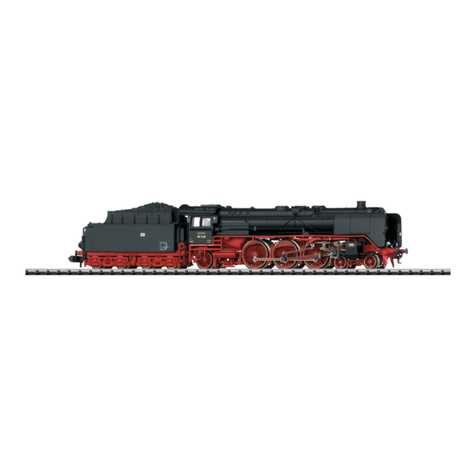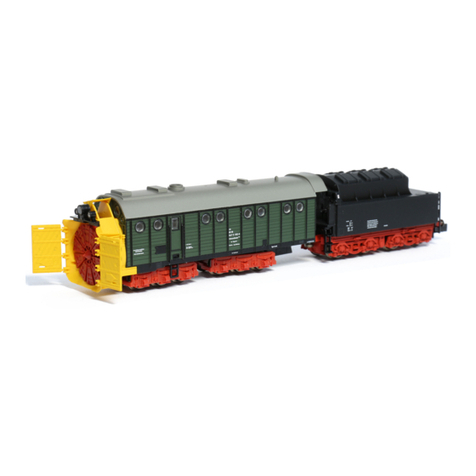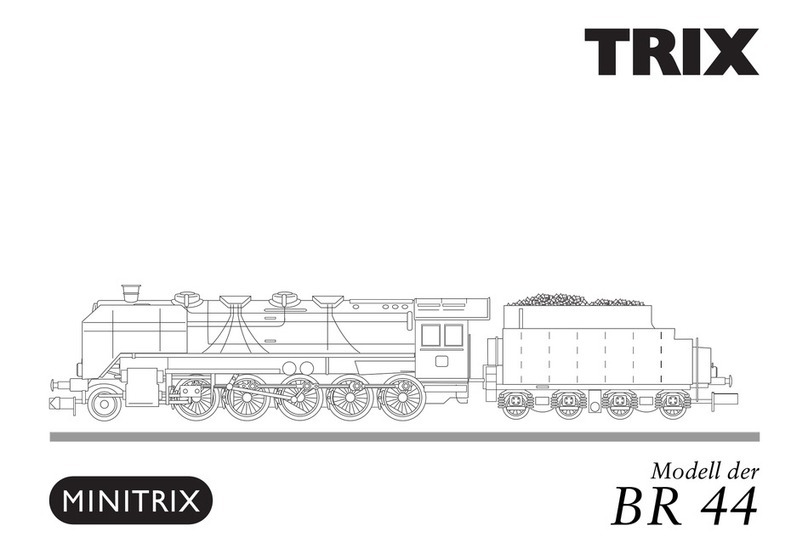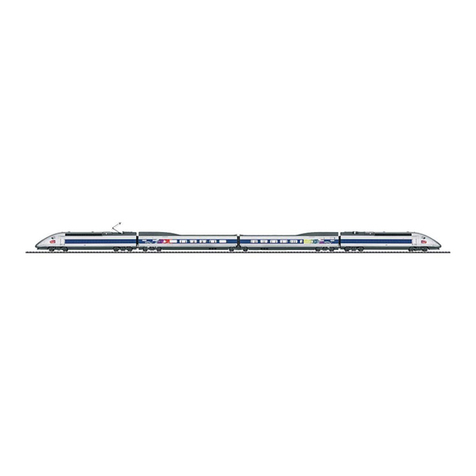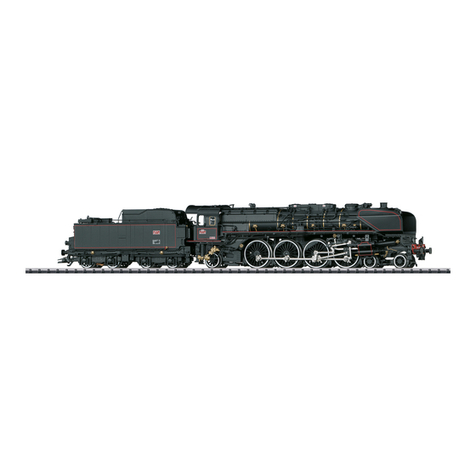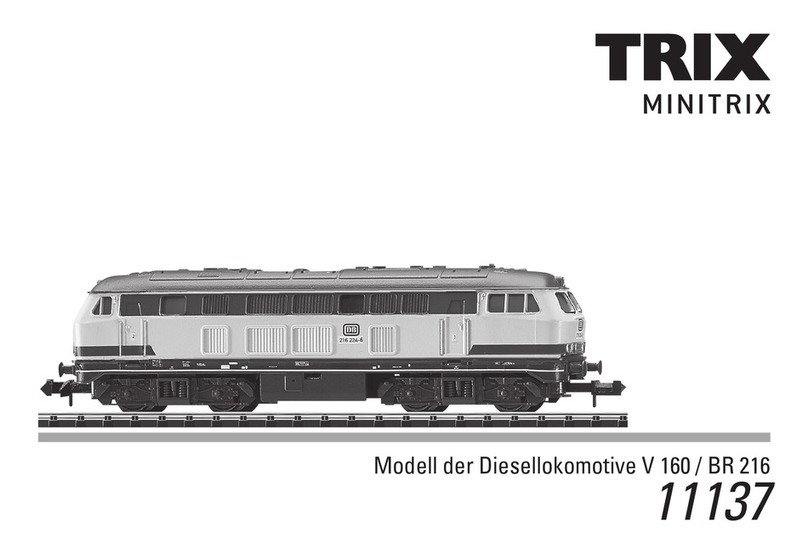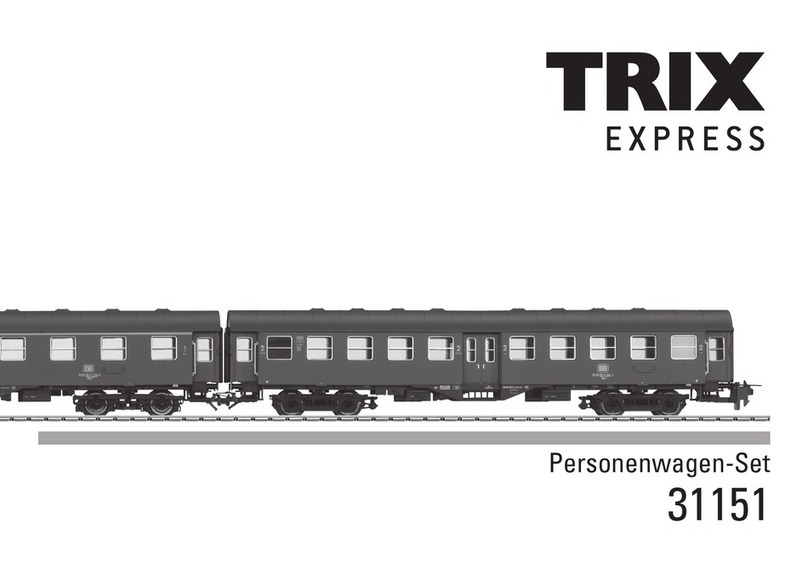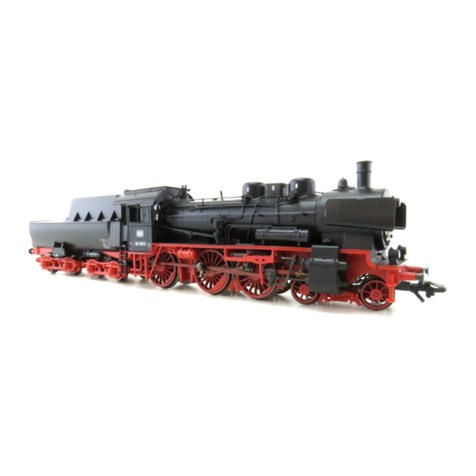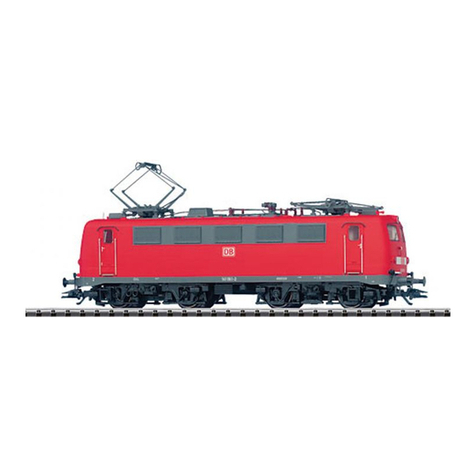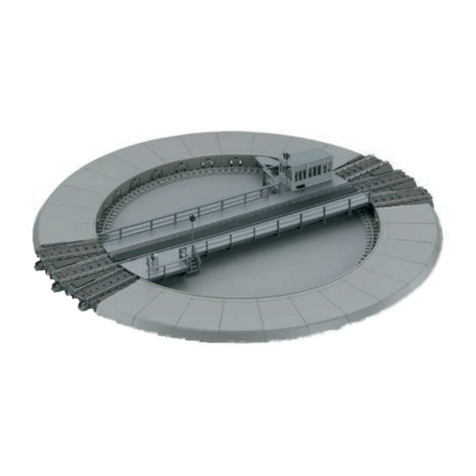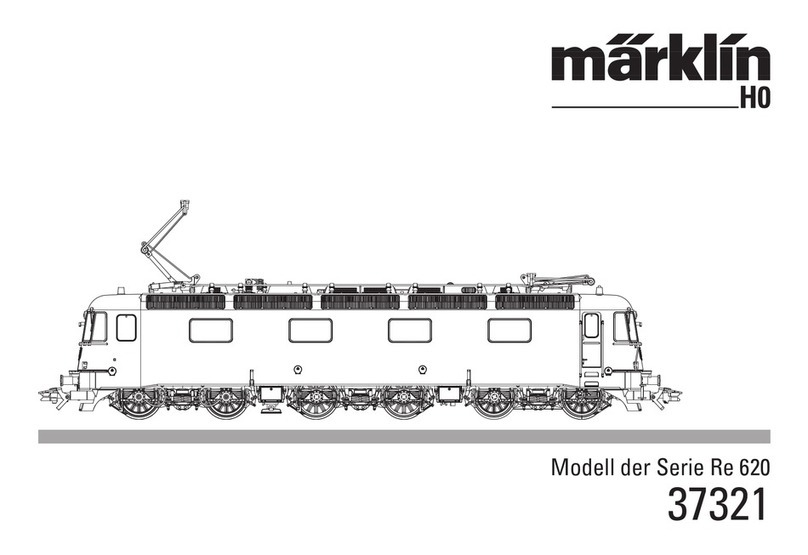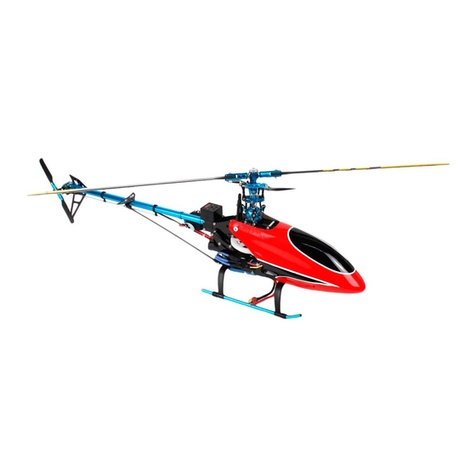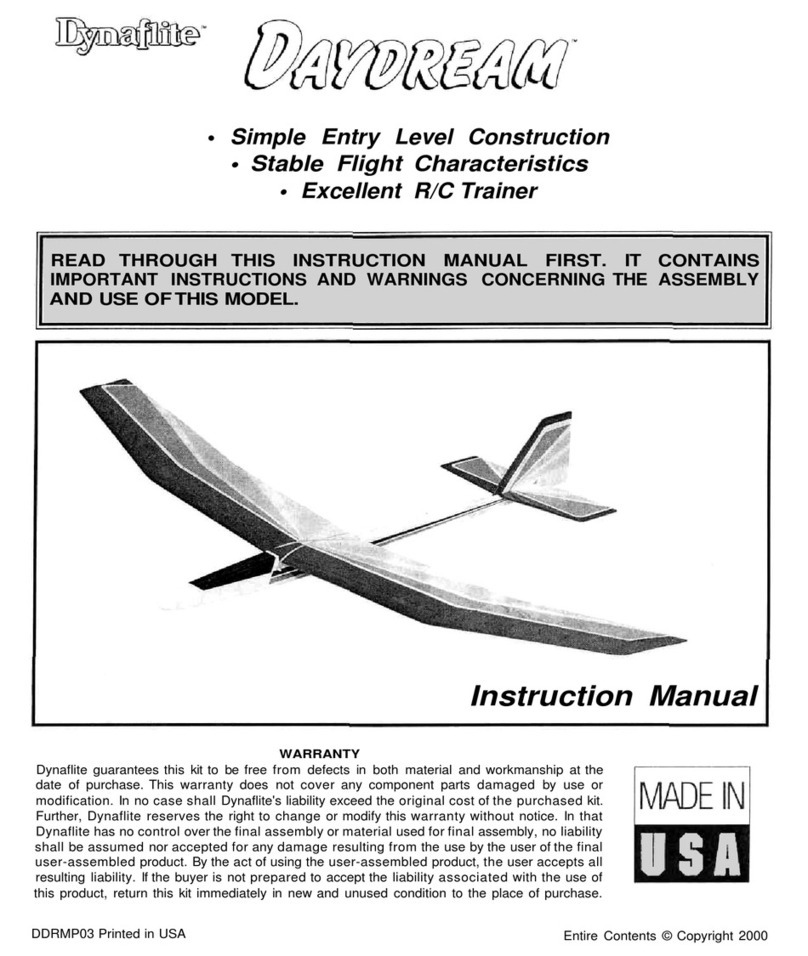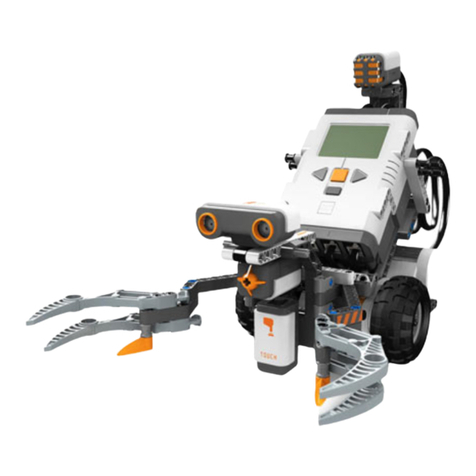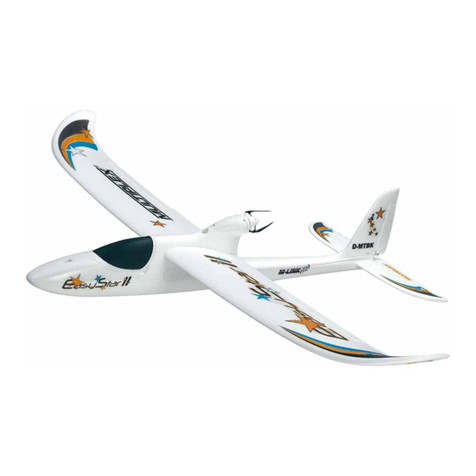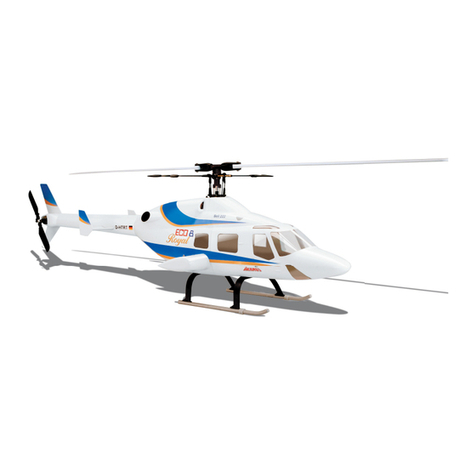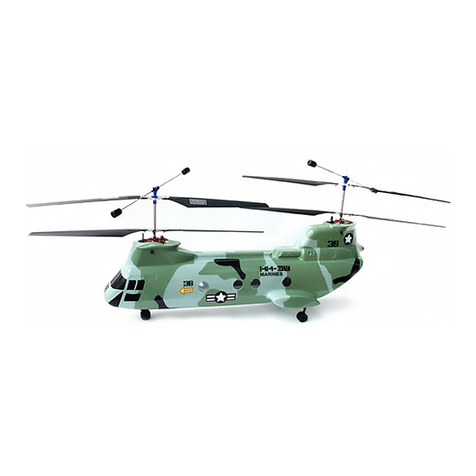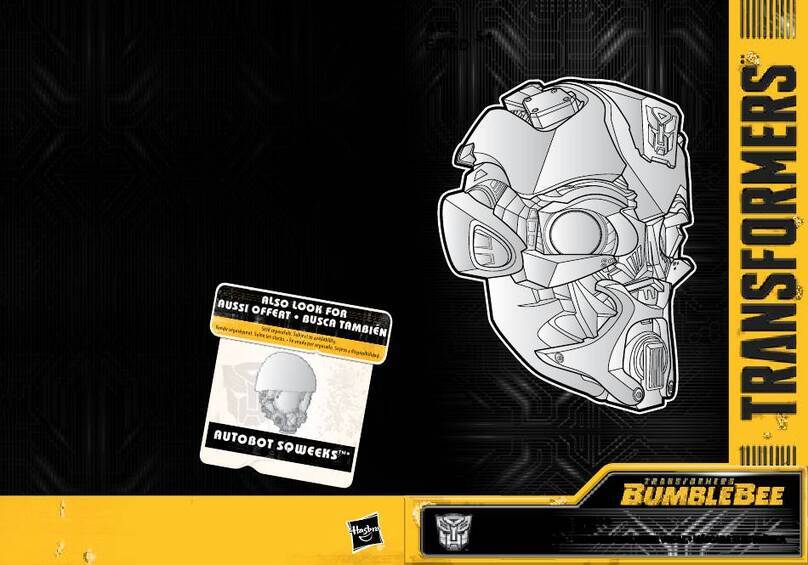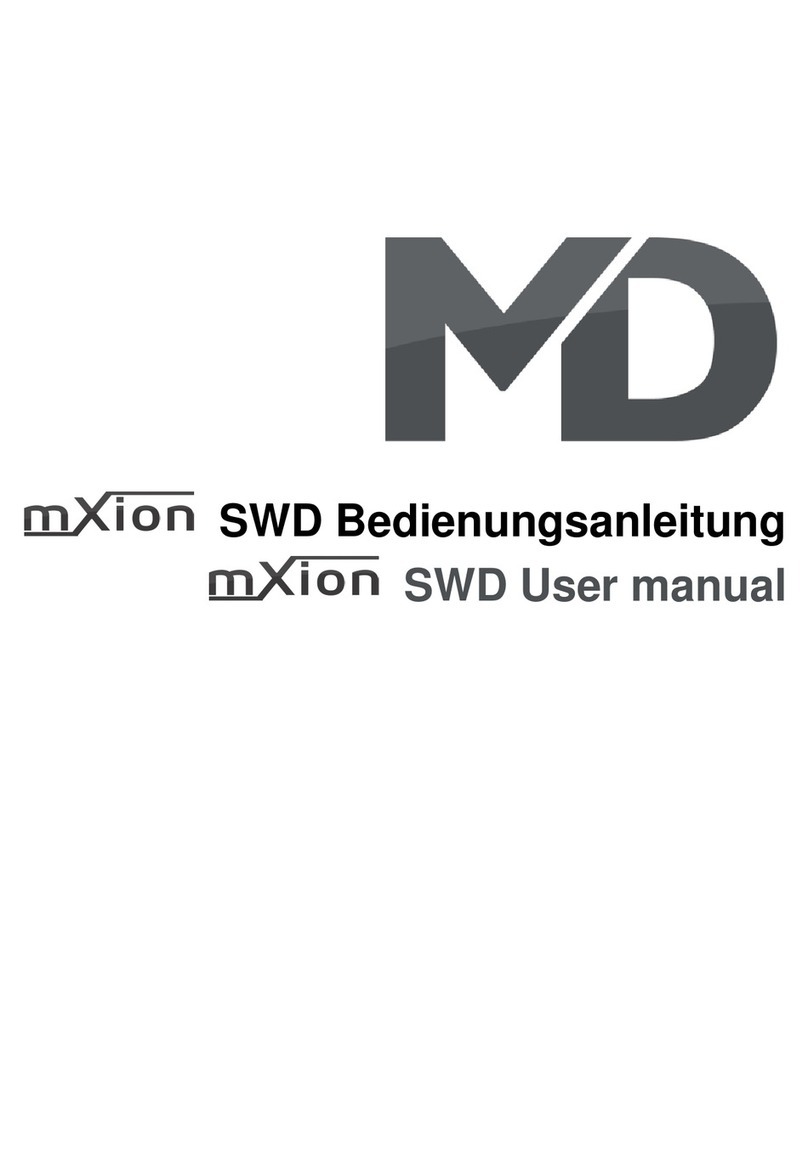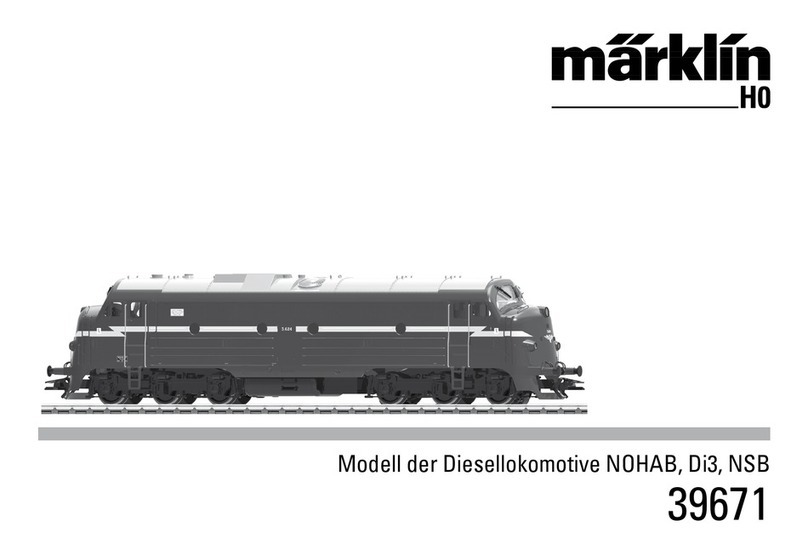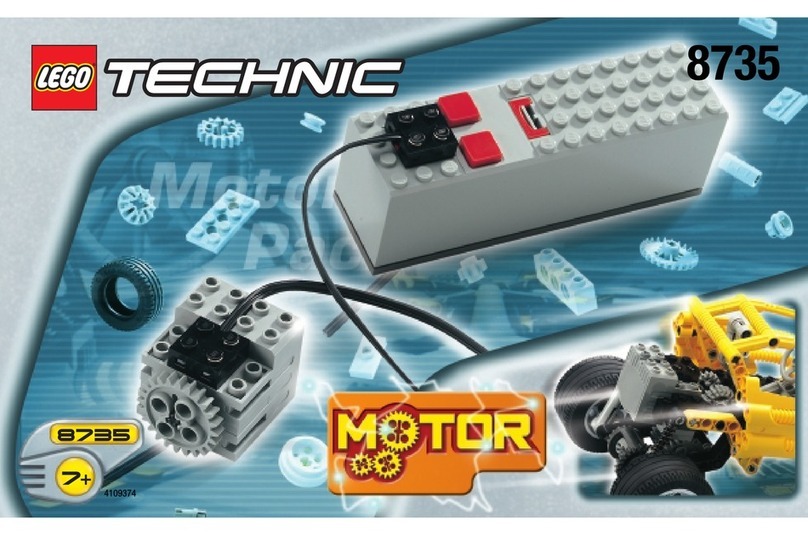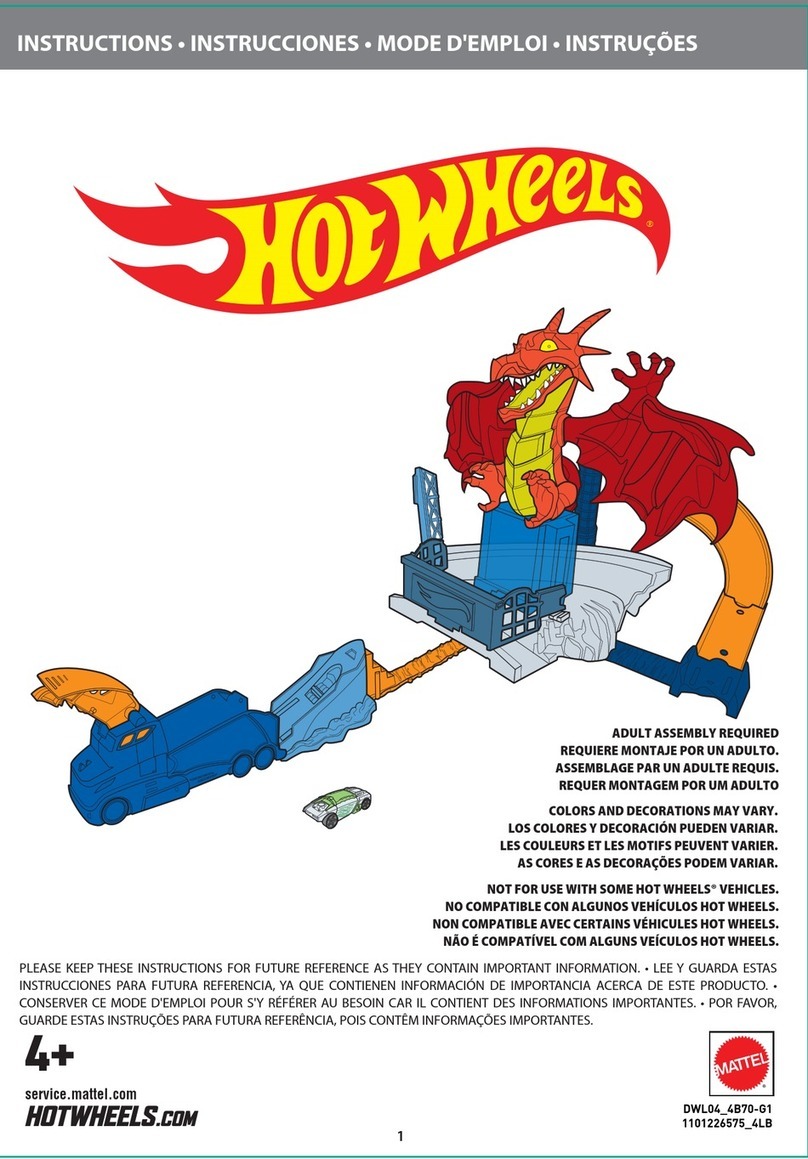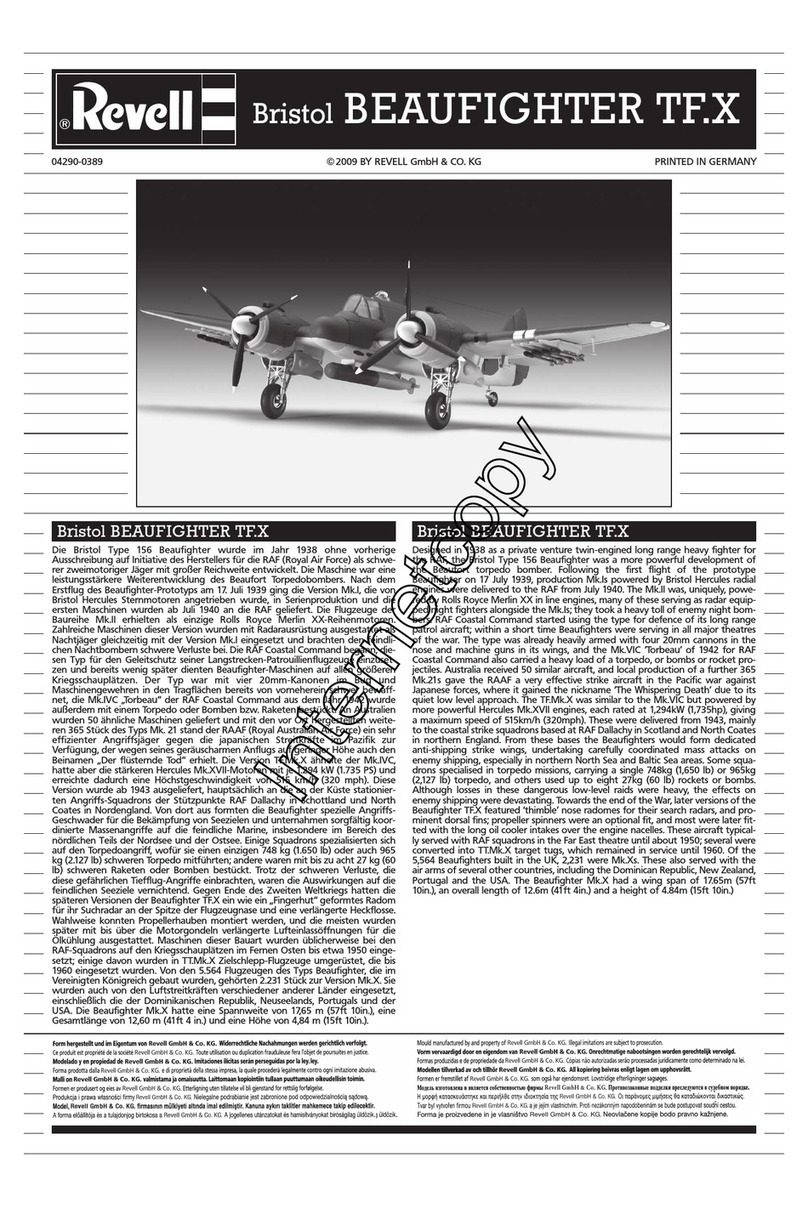4
Informationen zum Vorbild
Bei Schneelagen von über 1,5 Meter können Schneepflüge
die Bahnstrecken nicht mehr freiräumen. In diesen Fällen
kommen Schneeschleudern zum Einsatz. Das Vorbild des
Märklin-Modells, die Dampfschneeschleuder Bauart Hen-
schel, kann Schneeverwehungen bis zu einer Höhe von
6 Meter beseitigen. Um diese gewaltige Leistung zu ermög-
lichen, wird der auf der Schneeschleuder im Dampfkessel
erzeugte Dampf ausschließlich zum Antrieb des Schleuder-
rades verwendet. Da die Schneeschleuder keinen eigenen
Fortbewegungsantrieb besitzt, muss sie zusammen mit dem
zu ihr gehörenden Tender durch eine oder mehrere Schub-
lokomotiven gegen den Schnee gedrückt werden. Die Aus-
wurfrichtung wird durch die Drehrichtung des Schleuder-
rades und durch eine bewegliche Leitschaufel bestimmt.
Durch bewegliche Seitenflügel stellt sich die Dampfschnee-
schleuder auf das jeweilige Lichtraumprofil ein. Die Kohle im
Tender wird dabei durch Abdeckklappen gegen die Nässe
des weggeschleuderten Schnees geschützt.
Der nächste Winter kommt bestimmt! Auch auf Ihrer Modell-
bahn-Anlage.
Information about the Prototype
When snow depths exceed 1.5 meters (5 feet), snow plows
cannot clear railroad track right of way. Rotary snow plows
are used in these situations. The prototype of the Märklin
model, the Henschel design steam powered rotary snow
plow, can clear snowdrifts up to a depth of 6 meters (approx.
20 feet). The steam produced in the snow plow’s steam boiler
is used exclusively to power the rotary snow plow wheel to
enable this enormous output. Since the rotary snow plow has
no locomotion system of its own, it must be pushed along with
its tender against the snow by one or several locomotives.
The direction of throw is determined by the rotation of the
plow wheel and by a movable guide blade. The rotary snow
plow maintains the appropriate loading gauge by means of
movable side wings. The coal in the tender is protected by
hatches against the moisture of the flying snow.
Winter is on its way! Especially on your layout.
